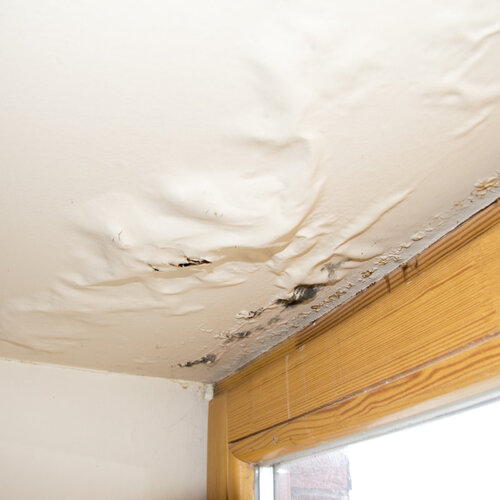The Home's Common Common Triggers of Leakage: In-Depth Analysis
The Home's Common Common Triggers of Leakage: In-Depth Analysis
Blog Article
How do you feel in relation to How Fast Water Damage Can Ruin Your Home?

Leaks not only trigger waste of water however can likewise trigger unnecessary damage to your home and advertise undesirable natural growth. Regrettably, water leaks might go undetected given that a lot of the pipework in our house is hidden. By understanding and also looking for day-to-day scenarios that cause leaks, you can secure your residence from future leakages and unnecessary damages. Today, we will certainly check out six leak triggers that might be creating your pipes to drip.
Instant temperature changes.
Extreme temperature changes in our pipelines can create them to increase as well as acquire unexpectedly. This expansion and also tightening may cause splits in the pipelines, particularly if the temperature are below freezing. If you kept an eye on how your plumbing functions, it would be best. The visibility of the formerly mentioned scenarios often indicates a high danger.
Rusty water systems
As time passes by, your plumbing system ages and corrosion such as corrosion may start eating away the pipelines. This may be the cause of discoloration or warping on your water pipes. This calls for an assessment with your plumber immediately. If our plumbing system is old, think about changing the pipes since they go to a greater threat of deterioration than the more recent models.
Faulty Pipe Joints
Pipe joints can deteriorate over time, resulting in water leaks. If you have noisy pipes that make ticking or banging noises, especially when the warm water is turned on, your pipe joints are most likely under a great deal of pressure.
Trespassing roots
A lot of water leaks start outside the house rather than inside it. If you notice a sudden decrease in water pressure, claim in your faucet, require time to head out as well as examine your lawn. You might discover wet spots or sinkholes in your lawn, and that may mean that tree origins are invading water lines causing water to permeate out. You can have your plumber look for intrusion, especially if you have trees or shrubs near your property.
Poor Water Connectors
At times, a leakage can be caused by loosened hoses as well as pipes that provide your appliances. Generally, changing is what causes the loosened water Links. You may locate when it comes to a cleaning equipment, a tube might spring a leakage as a result of drinking throughout the spin cycle. In case of a water connections leakage, you may observe water running directly from the supply line or puddles around your appliances.
Obstructed Drains
Blocked drains could be frustrating as well as inconveniencing, but they can often wind up creating an overflow leading to rupture pipelines. Keep eliminating any kind of products that may decrease your drains that might obstruct them to stay clear of such aggravations.
All the above are reasons for leaks but not all water leaks result from plumbing leaks; some leaks might originate from roof covering leakages. All leakages should be repaired right away to avoid water damage.
Leaks not just create waste of water however can also trigger unnecessary damage to your house as well as promote unwanted organic growth. By looking as well as recognizing for day-to-day scenarios that trigger leaks, you can safeguard your home from future leakages and also unneeded damage. Today, we will look at six leak creates that might be creating your pipelines to drip.
At times, a leakage can be triggered by loose pipes and pipes that provide your home appliances. In case of a water links leak, you might see water running directly from the supply line or puddles around your home appliances.
How To Check For Water Leak In Your Home
How To Check for Leaks
The average household's leaks can account for nearly 10,000 gallons of water wasted every year and ten percent of homes have leaks that waste 90 gallons or more per day. Common types of leaks found in the home are worn toilet flappers, dripping faucets, and other leaking valves. These types of leaks are often easy to fix, requiring only a few tools and hardware that can pay for themselves in water savings. Fixing easily corrected household water leaks can save homeowners about 10 percent on their water bills.
To check for leaks in your home, you first need to determine whether you're wasting water and then identify the source of the leak. Here are some tips for finding leaks:
Take a look at your water usage during a colder month, such as January or February. If a family of four exceeds 12,000 gallons per month, there are serious leaks.
Check your water meter before and after a two-hour period when no water is being used. If the meter changes at all, you probably have a leak.
Identify toilet leaks by placing a drop of food coloring in the toilet tank. If any color shows up in the bowl after 10 minutes, you have a leak. (Be sure to flush immediately after the experiment to avoid staining the tank.)
Examine faucet gaskets and pipe fittings for any water on the outside of the pipe to check for surface leaks.
Undetected water leaks can happen without the home or business owner even realizing. If you suspect a water leak, but not able to find the source. It is time to contact a professional water leak detection service, The Leak Doctor.
How To Find a Water Leak In Your Home
https://www.leakdoctor.com/blog/How-To-Check-For-Water-Leak-In-Your-Home_AE197.html

I came across that blog post about How to Find Water Leaks while doing a search on the web. Kindly set aside a second to distribute this write-up if you appreciated it. We recognize the value of reading our article about How Fast Water Damage Can Ruin Your Home.
Trustworthy fix? Call. Report this page